Abdirahman’s mother held him close, though she believed he was already dead. The skeletal 11-month-old boy was unconscious on the long minibus ride to Somalia’s capital Mogadishu, from Janale, in Lower Shabelle – nearly 100km away. Beside them sat the boy’s aunt, Siciido Osman Gasim. “When we were bringing him he was not even moving,” Gasim recalled later. “My niece couldn’t bring him alone because she was so devastated, thinking he was dying.”
Now, they were sitting in an intensive care unit in Banadir Hospital, where Abdirahman lay connected to a drip. His mother, who is just 17 and is not being named here, watched over him. “My son is sick,” she said, the fear still evident in her face. They had been in hospital for four days, and have no plans to go back home again, even if he is discharged.
“The lack of food, lack of water has caused this,” Gasim explained, looking at the boy. The family used to farm, but stopped because of the lack of water. Now “everyone is gone, they left the area and became internally displaced,” she said. “We have nothing to go back to.”
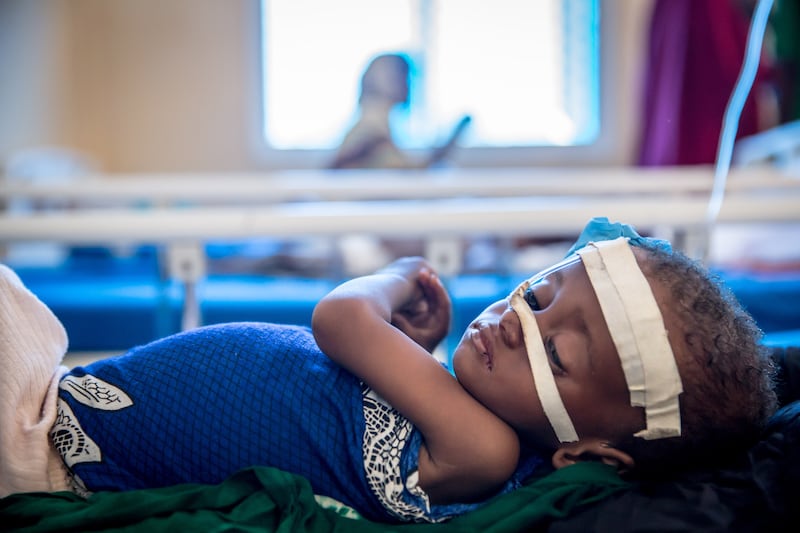
Somalia is experiencing its worst drought in four decades, after the failure of a fifth consecutive rainy season. As animals perish from hunger and thirst, more than 1.1 million people have walked, or travelled long ways in buses, cars, trucks or on donkeys, searching for aid and assistance. Along the route, many die. But the deaths are largely going uncounted.
Gasim said she personally knows of six deaths due to drought: most of them children. “There are people who died because of lack of food and there are people who almost died but were brought here and survived,” she said.
Banadir Hospital is one of Somalia’s biggest mother and child hospitals. It currently has beds for 40 malnourished children, while work has started on an extension that will fit another 28. But hospital staff say they are at capacity and turning children away. “The situation is overwhelming,” said Dr Hafsa Mohamed. “The cases are getting more severe. We’re very stressed.”
There have been at least 172 deaths in Banadir Hospital so far this year compared to 92 last year, with staff saying more than 90 per cent of children who are admitted survive. And these are the lucky ones: the ones who manage to access treatment.
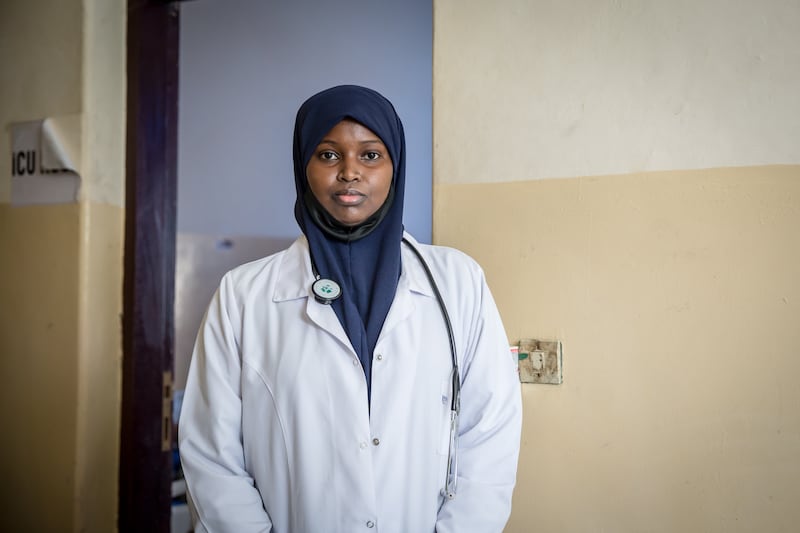
Counting the dead
Deaths, and whether they’re being counted, are at the centre of a debate over how incidents of mass starvation are assessed, and what is owed to the people suffering through them. Notably, should what’s happening in Somalia be labelled a famine? A famine declaration requires technical requirements to be met, including that at least one fifth of households are facing extreme food shortages, at least 30 per cent of children have acute malnutrition; and that two people in every 10,000, or four children, are dying every day of hunger-related reasons, including the interaction of malnutrition and disease. But what if that data is not being fully collected?
This year, aid agencies and UN staff have made repeated statements about how Somalia is on the “brink” of famine. “Famine is at the door,” said UN humanitarian affairs chief Martin Griffiths in September, during a press conference when a famine declaration was expected by many.
Speaking privately, some aid officials and diplomats question whether the motivation to gather enough evidence has waned because Somalia’s government does not want a famine declaration, or whether what is happening across the country right now shows the modern criteria for assessing whether famine exists is fit for purpose at all.
“There’s a massive crisis in terms of the data collection,” said a humanitarian worker with knowledge of the situation, who did not want to be named for fear of their work being affected. “If we had an adequate approach to data collection it would have already been declared.”
One contributing factor is that Islamic burials are carried out as quickly as possible, making it less likely that deaths are officially recorded, the humanitarian worker said. During my last visit to Somalia, in April, several displaced people told me they had buried their children or spouses on the side of the road while travelling to camps. “These people, it’s as if they didn’t exist,” said the humanitarian worker.
The person also worried that while some aid agencies have data on deaths from the hospitals and clinics where they work, they are not providing them to each other, and certainly not pushing the government to accept them. “Why is that data so hard to access and why is it not being shared?” the person asked. “It’s as if we have normalised people starving and crying of hunger instead of thinking of it as a national crisis. Human suffering is beyond, I can’t even describe it ... The number of children who are waiting to die ... Why are we accepting this approach in Somalia?”
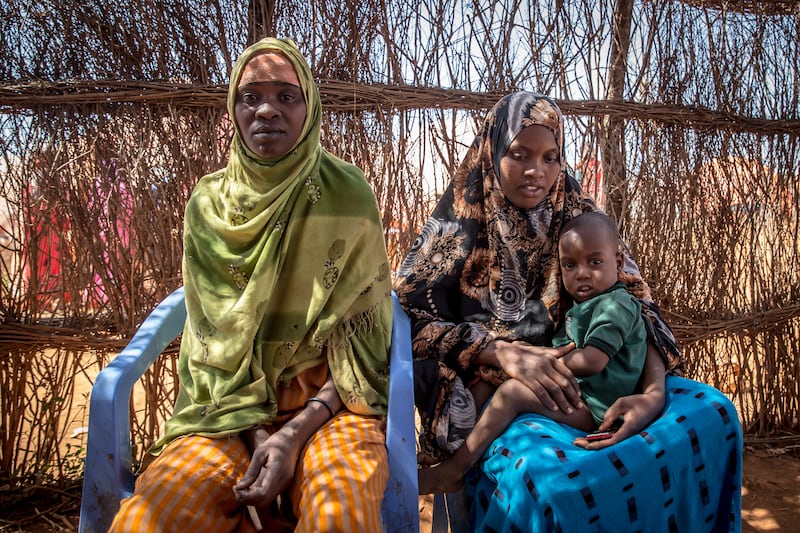
‘Already too late’
“Abaar” means drought in Somali. The Horn of Africa country of roughly 17 million people has a long history of droughts, but climate scientists say it is one of the most vulnerable countries on earth to climate change, and droughts are becoming more frequent.
Somalia’s last famine was declared in 2011, when about a quarter of a million people died: about half of them before the declaration.
Eleven years later the current drought is said to be the worst in 40 years. Yet it is hard to get accurate data on how broad the suffering is, not least because the country is still at war. Close to one million people are said to still be in places controlled by Islamist militant group Al Shabaab, where they have little or no access to aid.
The latest report from the Integrated Food Security Phase Classification (IPC), the international organisation providing the scale used to assess global hunger, says a famine is not taking place. In the report, released on December 13th, it specified that 214,000 Somalis are estimated to be experiencing “catastrophe” levels of food insecurity, which is the same level as famine, but without all technical thresholds being met. Some 1.8 million children are thought to be experiencing acute malnutrition, and 5.6 million people are going through “crisis” levels of food insecurity.
[ Displaced in Somalia: 'Only cooking oil and flour is possible to buy'Opens in new window ]
A famine could still take place from next April, the IPC predicts, when the number of people facing “catastrophe” conditions is predicted to rise to 727,000. By then, approximately 8.3 million Somalis will be facing crisis levels of food insecurity, or worse, it said.
The IPC’s latest report was celebrated by some officials connected to the Somali government. They praised this as a marker of the success of the humanitarian and government response to the drought so far, with the UN also saying that famine has been “averted” for now, at least.
Other organisations had a varied, and sometimes quite different, reaction.
“Let us be absolutely clear: famine is already present and killing tens of thousands silently in Somalia,” said the Norwegian Refugee Council’s Somalia country director, Mohamed Abdi, in a statement. “Lethal hunger has been allowed to spread like wildfire. It is already too late for hundreds of thousands caught in this catastrophe. When Somalia experienced famine in 2011, and more than 250,000 people died, the international community pledged ‘never again’. Yet we find ourselves once again facing catastrophe.”
No certainty
Part of the confusion is that assessments around starvation are often filled with prediction, but there is not as much certainty about what is already happening. Aid officials who spoke to me said they worried that, while a famine keeps being forecast, the lack of hard data being collected or presented to the Somali government about the situation so far has given politicians the ability to detach themselves from the reality of how severe the crisis is.
How many have died to date as a result of the drought? Khadija Mohamed Al-Makhzoumi, Somalia’s minister for climate change and the environment, said she had no hard figures.
Adan Hassan, the deputy governor for humanitarian affairs for the badly-affected Bay region, said all he knew was that “some” children are dying.
Dini Abdi Noor, the director general for the ministry of humanitarian affairs and disaster management in South West State, one of the worst affected, said he had heard of about 12 children dying in the past three months.
Dr Ahmed Abdi Aden, the deputy commissioner of Somali disaster management agency, said he knew of no deaths at all.
“We averted the famine,” Somalia’s president Hassan Sheikh Mohamud told Al Jazeera on December 16th, though he admitted that it still might happen. “The reality on the ground right now, the amount of food in the country, the amount of food distributed throughout, there is no immediate famine or crisis or risk right now.”
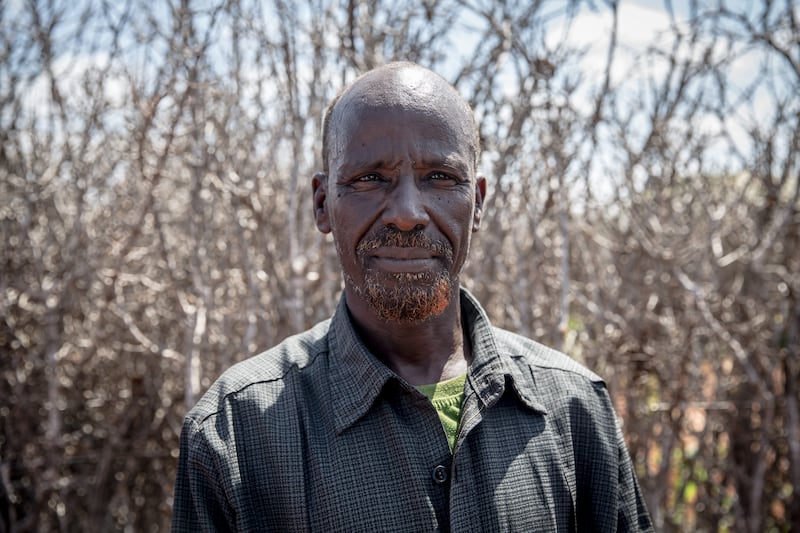
Visiting the graves
According to the UN’s office for the co-ordination of humanitarian affairs, 1,049 children died in nutrition centres in Somalia between January and November this year. A spokesperson said this number included all facilities across the country except for those run by the International Committee of the Red Cross. These figures were dwarfed by admissions figures of more than 1.3 million.
Aid workers who provided mortality figures were very keen to emphasise that severely malnourished children who manage to access medical and nutritional care have a much higher chance of survival than those who don’t make it – and the vast majority probably never reach clinics or hospitals.
“If we would be free to move around we would go and count graves, [we would], I don’t know if anyone is doing that,” said one humanitarian worker.
I took those words to heart, though was severely limited by how many displaced person camps I could access because of time and security issues. In the three where I asked about deaths, I was told in total of about 169 children who recently died, and counted 115 graves.
In a camp in the Hanano IDP zone in Baidoa, a city which people displaced by drought have flocked to, I asked members of a local water committee how many people had died from hunger-related causes. They took me to part of their camp, where small mounds marked each newly buried body. I counted 101. These were all children under the age of eight, residents said, and they were buried in the last two months. Two children were buried the previous day, and two more the day before that.
Abshir Issack Abdi’s two-year-old son, Adam, was among them. Along with a lack of food, Adam contracted measles, which is particularly dangerous for malnourished children whose immunity is low. “He didn’t receive any medication,” Abdi said. “There’s no health facility so we couldn’t take him. There’s no means of transport: it would have cost $5 (€4.72) on a motorbike to get to the hospital, which I couldn’t afford.”
Before the drought, Abdi said, he owned 10 cows and 50 goats. “They died,” he explained, and his means of livelihood was eliminated. Now, “we just survive, there’s a time we get enough and a time we don’t ... We’d prefer to get any basic needs for humans.”
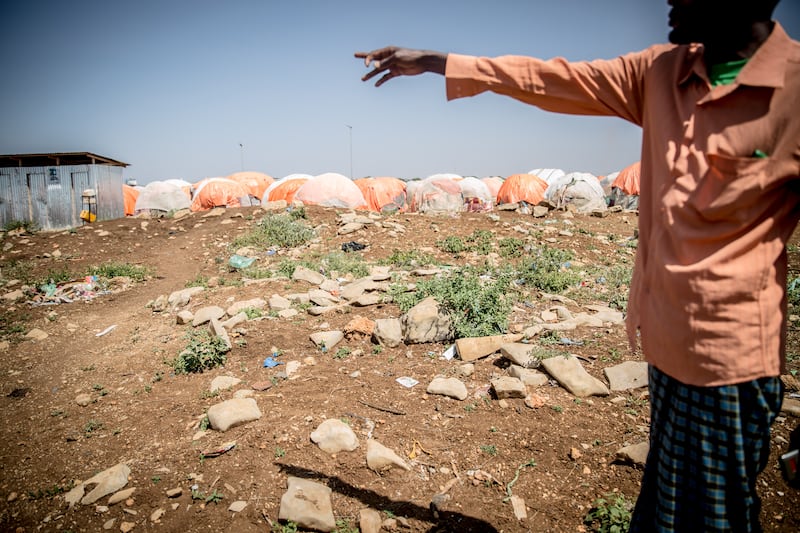
A series of mounds
At the Edaan Qaboobe IDP site, I asked local leader Isaaq Hassan Mohamed whether there had been deaths. He took me around 20 metres away, to a series of mounds I would not have spotted alone. As in Hanano IDP zone, they were unmarked, except for circles of stones, and situated near the shelters that displaced people are living in.
There were 14 from the last three months, but Mohamed said the owner of the land they are camping on began complaining about burials a while ago, and they had to switch sites. He pointed across the camp to a place where he said there were 35 more recent graves. All were children, dead from hunger and related causes. My security adviser said I could not go there as it was located close to African Union forces, who might perceive our approach as a potential threat.
In a third camp, Tuug Soy, there have been at least 19 deaths in the last few months, residents say. The bodies of the dead were buried in remote sites, camp leader Jafar Aden explained, as “there’s no space in the local cemetery,” so it was not possible for me to see them.
People were dying because of a lack of aid, he said: there has been none at all for most of the roughly 2,400 people living there.
Among the 19 who died were two of Kaatiba Mustafa’s three children. The 25-year-old said her seven-year-old boy died one month before, and her two-year-old girl three weeks later.
“Both had measles as well as severe malnutrition,” she said. “The healthcare was not adequate.”
Muslima Madey (28), lost two of her four children: an eight-year-old and a one-year-old. “We need to improve food security,” she said. “Even the common cold can kill when someone is hungry. Hunger makes children weak. If you are weak any disease can attack you.”
Famine and funds
Does it matter whether Somalia’s drought is labelled a famine? Aid workers say it would result in a new rush of donations and a renewed sense of urgency. Since 2011, there have only been two famine declarations globally: Somalia in 2011, and South Sudan in 2017.
After repeated attempts to talk to someone involved in the IPC assessments, I finally managed to speak to Daniel Molla, chief Somalia technical adviser at the UN’s Food and Agriculture Organisation, in a phone interview on Friday.
He said their methods of gathering data are robust, and that the IPC assessments actually show that the mortality thresholds for the numbers of children dying, which are required for a famine declaration, have been reached among displaced people in Mogadishu and Baidoa. More than four children are dying per day per 10,000 people, he said (an average of 4.86 a day in Baidoa and 4.19 a day in Mogadishu), but other thresholds have not been met. “The unfortunate situation that’s happening now is that there is too much emphasis on whether there is famine or not,” he said. “The level of suffering is beyond imagination, the scale and the severity of the suffering… the level of mortality is unacceptably high.”
In interviews, Somali government officials say they are keen to encourage development which may improve the country’s resilience during future droughts. Some worry that funding may be diverted towards an emergency response and away from longer-term projects if there is eventually a famine declaration, or that international investment may be affected, which the new government is heavily pushing for.
Without the declaration, $1.27 billion (€1.20 billion) was still raised through the UN-organised Somalia 2022 response plan, though officials say another $995 million (€940 million) is needed. The US government pledged $1.3 billion (€1.23 billion) this year. Some humanitarian workers complain that the funding has not been distributed quickly enough, or that the vast majority is going through UN organisations, which are known to have particularly large overheads.
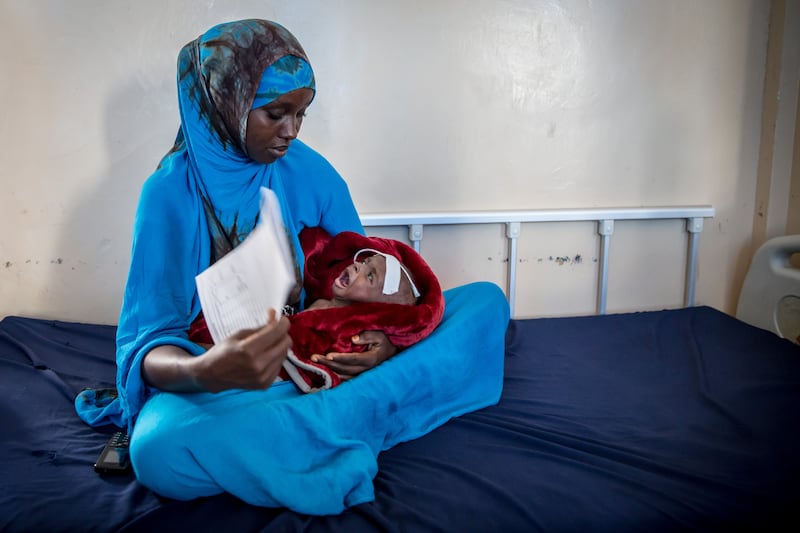
Thin chests and laboured breaths
Meanwhile, Somalis continue to suffer.
In Mogadishu’s Banadir Hospital, mothers fanned weak babies, some of whom were barely moving except for their thin chests rising with laboured breaths. Many were being fed nutrients through drips or tubes into their noses.
Farhiya Mayow Muhiyadin (30), was there with her nephew, Ahmed. He is eight months old but weighs just 3.7kg, even after 19 days in hospital.
“His mother was caring for him, but then became mentally distressed after seeing other children dying in the ward,” Muhiyadin explained. “She was in shock and was taken back home. She’s been gone now for a week.”
The family are based about 30km from the city, in a small village in the Afgooye district.
“We had a farm and livestock but after the drought came we lost all the cows,” Muhiyadin said. “In the previous drought, 12 years ago, we lost cows, but this time we lost more.”
Even if they are cured, some of the children discharged from the hospital end up being readmitted, as their parents continue to struggle to feed them, doctors said. Did Muhiyadin have concerns about that? Does she know how they will face the coming months, when the mass starvation of Somalis is expected to get worse? For now, she responded, “we just trust in Allah.”




















